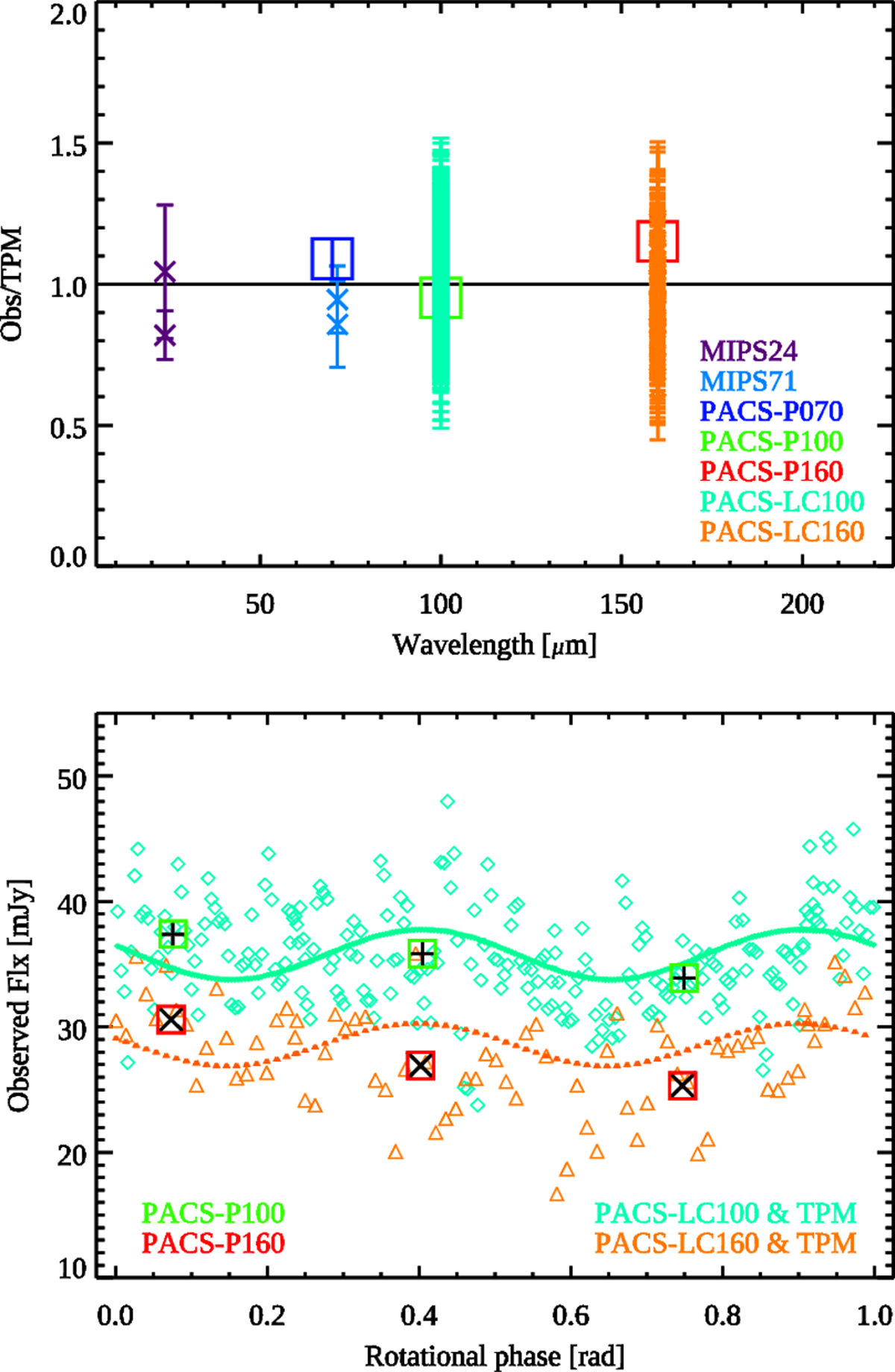Fig. 6

Download original image
Thermophysical model results for Quaoar. Top: all available IR observations divided by the corresponding TPM predictions, using a triaxial shape with an equivalent diameter of 1090 km, and a thermal inertia of 12 J m−2K−1s−1/2. The calculations take small flux contributions from the ring and Weywot into account (intermediate case). These absolute ratios are very sensitive to the size and thermal inertia assumptions in the model; the 24 µm point is strongly influenced by surface roughness effects. Bottom: small ring and Weywot flux contributions are subtracted from the observed PACS 100 and 160 µm light curve data. The triaxial Quaoar model solutions (at 100 µm in green and at 160 µm in orange) are superimposed. The boxes represent the mean PACS values derived from the three observing blocks (see Table 2).
Current usage metrics show cumulative count of Article Views (full-text article views including HTML views, PDF and ePub downloads, according to the available data) and Abstracts Views on Vision4Press platform.
Data correspond to usage on the plateform after 2015. The current usage metrics is available 48-96 hours after online publication and is updated daily on week days.
Initial download of the metrics may take a while.


